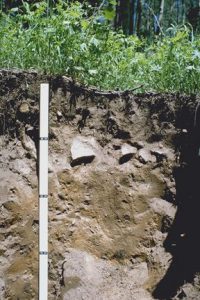23rd Mar 2012

Although it remains difficult to demonstrate the divisibility defense for liability at contaminated sites, a case recently litigated by Beier Howlett attorneys demonstrates that the factors that contribute to this defense can be used to persuade a court to reduce a defendant’s share of the remediation costs.
Here, a federal judge found that liability was not divisible, but nevertheless held that Beier Howlett’s client, Royal Oak Industries, should be allocated a minimal share of liability because it ran a “cleaner operation” than previous owners of the site.
 For decades, courts and lawyers presumed that liability under the federal Comprehensive Environmental Response, Compensation and Liability Act (CERCLA) was joint, which meant that a person would be liable for all remediation costs at a contaminated site no matter how much contamination the person actually caused. In May 2009, the United States Supreme Court in Burlington Northern Railroad v. United States overturned this presumption, holding that liable persons may attempt to prove the reasonable basis by which their liability should be “several” or “divisible,” which means that the person’s share of remediation costs should be based on the amount of contamination the person contributed to the site.
For decades, courts and lawyers presumed that liability under the federal Comprehensive Environmental Response, Compensation and Liability Act (CERCLA) was joint, which meant that a person would be liable for all remediation costs at a contaminated site no matter how much contamination the person actually caused. In May 2009, the United States Supreme Court in Burlington Northern Railroad v. United States overturned this presumption, holding that liable persons may attempt to prove the reasonable basis by which their liability should be “several” or “divisible,” which means that the person’s share of remediation costs should be based on the amount of contamination the person contributed to the site.
One of the first cases to be tried under the Supreme Court’s new formulation, entitled ITT Industries, Inc. v. BorgWarner, Inc., involved a site in Bronson, Michigan, contaminated with trichloroethylene (an industrial degreaser) from two nearby industrial sites and contaminated with cutting oils and metals from prior operations at the site. The defendants (including Royal Oak Industries) each asserted that the environmental harm from their operations could be divided from harm caused by others.
Nevertheless, the court allocated liability using equitable principles of fairness to find that the “cleaner operation” of Royal Oak Industries resulted in a 2% share of liability compared with the 38% share of the former site owner and 60% share of the off-site operations.
The ITT Industries decision suggests that proving the divisibility defense remains difficult, even after the Supreme Court cleared the way for divisibility in Burlington Northern. Another lesson of ITT Industries is that the factors that contribute to a divisibility defense can be used to persuade a court to reduce a defendant’s share through equitable allocation.
Jeff Haynes, chair of Beier Howlett’s environmental practice group, tried the case with assistance from Beier Howlett attorney Keith Jablonski and the environmental practice group’s paralegal, Doreen Defauw.
Written by Jeff Haynes
T: 248-282-1070
E: jhaynes@bhlaw.us.com


